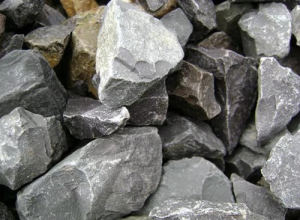1. Status Quo of Global Limestone Consumption
Judging from the current domestic and foreign demand for limestone, the world’s annual demand is about 360 million tons, but 80% is for general use. High-quality lime has a large market gap due to few resources and low output. In recent years, countries in the Asia-Pacific region have imported more than one million tons of limestone from China each year due to the lack of domestic limestone resources.
From the perspective of the international market, my country is rich in limestone mineral resources, accounting for more than 64% of the world’s total reserves. It is an advantageous natural resource. Due to the limited limestone minerals in most western countries, the production of cement and the exploitation of limestone mineral resources have been restricted, so their dependence on Chinese limestone has gradually increased, and the export market has continued to be optimistic.

From the perspective of resources, the larger limestone mines that are relatively concentrated in the country have basically been monopolized by large cement companies and metallurgical companies, and new resources are becoming less and less. In a sense, occupying limestone resources means occupying Future cement and steel markets.
2. Prospect
(1) Industrial policy regulation to promote the healthy development of the industry
As an important raw material for industrial production, lime is mainly used in metallurgy, chemical industry, building materials and other national economic industries, and plays an important role in prospering the market, expanding exports, attracting employment, increasing farmers’ income, and promoting urbanization. my country’s macro-control of non-metallic mineral products has been increasing, eliminating outdated production processes with high energy consumption, high pollution and low utilization rate, and guiding the industry to low pollution, low energy consumption, high resource utilization, and strong technical level through industrial policies. And enterprises with deep processing capabilities are concentrated, guiding the product structure to tilt towards high value-added deep processing products. my country restricts environmental pollution, outdated equipment use and resource waste, and eliminates a large number of small-scale lime enterprises with outdated production processes, which effectively reduces vicious competition in the industry and is conducive to the long-term healthy and stable development of the industry.
Under the promotion of policies and the efforts of enterprises, the steel industry has experienced a series of important changes in recent years and achieved remarkable results in reducing production capacity, steel production has achieved growth, consumption has gradually recovered, steel prices are in a stage of shock and upward movement, and the profitability of steel enterprises has achieved relatively high levels. substantial growth.
(2) The continuous increase in product application fields drives industry demand
At present, the vast majority of lime is still used in metallurgy, chemical industry and building materials industries, and its use in other fields is still in the development and growth stage, such as sewage treatment, dust removal, desulfurization and denitrification in the environmental protection industry, and as a soil conditioner in agriculture. As a desiccant in the food industry, with the development of the industry towards refinement, diversification and specialization, the application field of lime products will be broader, which is conducive to stimulating industry demand. Especially with the enhancement of people’s awareness of environmental protection, the application of lime in the environmental protection industry has a broad market prospect.
(3) Structural adjustment of downstream industries drives market demand for high-end products
At present, China’s economic development is in a new normal. In order to maintain and stabilize growth, the state proposes to reform the supply side with great efforts while ensuring demand. In recent years, the state has implemented policies to eliminate outdated production capacity in industrial industries such as chemical fiber, steelmaking, ironmaking, coke, tanning, printing and dyeing. A large amount of off-balance sheet low-end steel production capacity has been cleared, and the overall production capacity of the industry has been suppressed to a certain extent. At the same time, the steel industry is also facing high environmental pressure, high capital pressure and high energy pressure, and the industry structure adjustment, transformation and upgrading are imminent. The state clearly requires the implementation of laws, regulations and industrial policies on environmental protection, energy consumption, quality, safety, technology, etc., and production capacity that does not meet the standard requirements must be withdrawn in accordance with laws and regulations.
3. Challenge
(1) The level of technology research and development is low
Compared with developed countries, the basic research of lime industry in my country is weak. Only take the active calcium oxide shaft kiln, which is currently the most widely used, as an example. There are three types of kilns.
(2) Unreasonable industrial structure
The domestic lime industry has a large number of production enterprises and insufficient independent innovation ability, resulting in prominent product structural contradictions. Especially in the low-end and other low-value-added markets, the homogeneous competition is fierce, which reduces the level of industrial concentration. At the same time, affected by the adjustment of industrial structure in the steel, chemical, pharmaceutical and other industries, the supply of medium and high-end products such as metallurgical lime and light calcium carbonate is in short supply. more prominent.
(3) Pressure on energy conservation and emission reduction
my country has become the world’s second largest energy consuming country and the largest carbon dioxide emitter, and is showing a gradual upward trend with the improvement of living standards. The Copenhagen Accord in 2009 made arrangements for developed countries to implement mandatory emission reductions and developing countries to take voluntary mitigation actions. In December 2015, the Paris climate conference reached a new agreement, and nearly 200 parties, including my country, pledged to achieve global carbon neutrality by the middle of this century. Carbon dioxide emissions are involved in the lime production process, so the lime manufacturing industry faces a relatively severe situation of energy conservation and emission reduction, but at the same time, energy conservation and emission reduction prompts the industry to make structural adjustments, which is conducive to the technological progress of the industry.
